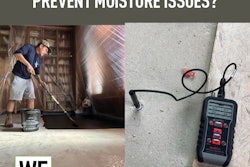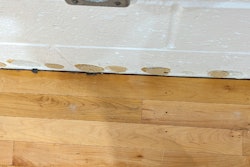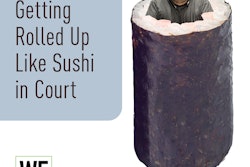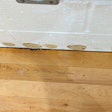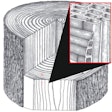Finish=Hardness?
My customers chose a factory-finished cherry floor and said they read that because it’s factory-finished, they don’t have to worry as much about dents. Is that true?
George Palmer, flat line sales manager at Reidsville, N.C.-based Premiere Finishing & Coating LLC, answers:
No. We have had people ask us, “Can you provide a hard finish?” What they usually want is impact resistance or to compensate for a soft wood like pine. In reality, simply having a “harder” finish does not give greater dent resistance to soft wood.
Consider that most high-quality factory finishes are applied somewhere between two and three mils in thickness. This is about one-tenth the thickness of a credit card. Site-applied finishes can add a few mils, but they still make a very thin film. Finishes simply do not have the bulk to resist impact or pressure on the wood underneath them, so they can’t protect the floor from dents.
However, this does not mean that they cannot be durable. Minor dents and scratches can be easily repaired with any number of proven site-applied finishes currently on the market.
When talking about dents and factory finishes, two things you should consider are adhesion and flexibility. You want your finish to adhere well so it won’t easily discolor or separate from the wood under impact, and you want it to be flexible enough that it doesn’t shatter under impact or turn white when scratched. Those two things won’t prevent a dent, but they will not highlight it.
Recovery Fees Explained
The cost of my finish went up, and my distributor told me it was due to the “PaintCare Recovery Fee.” What is it, and which products does it apply to?
Paul Fresina, director of operations and communications for PaintCare, answers:
The PaintCare Recovery Fee is applied to “architectural coatings.” For most people, this means latex and oil-based house paint, but for flooring installers it means stains, sealers and most single-component clear coatings such as urethanes, varnishes, shellacs and lacquers. These fees are paid by the product manufacturers to PaintCare and are passed down to distributors, retailers and eventually consumers. So far the fee has been adopted in Oregon and California, as required by their state paint stewardship laws. (Similar laws and programs exist in Canada.)
“Product stewardship” is a growing movement that requires manufacturers of certain products to develop a system to build into the price of the products the end-of-life cost for managing and disposing of either unused products (e.g., paint) or spent products (e.g., fluorescent light bulbs). PaintCare Inc., a non-profit organization, is charged with setting up convenient drop-off sites where homeowners and businesses can take their leftover architectural coatings for no additional charge. (Drop-off sites are usually at retailers.) By design, the cost for disposing and recycling leftovers is being transferred from local government-run household hazardous waste programs to the consumers of these products.
The PaintCare Program will start in Connecticut in July 2013 and in Rhode Island in 2014, and many other states are interested. More details on the program can be found by visiting www.paintcare.org or by calling (855) 724-6809.
[Note from the Editor: Since publication of this article the fee has been clarified to exclude products labeled specifically for professional use. For more information, go here.]
A Timely Matter
I have a customer with water damage to his floors. I told him it will take 30 days for acclimation and installation of his new floors (one week to acclimate, then installation, then two to three weeks before we can sand, stain and finish). He says they were originally done in a week. What can I tell him?
Brett Miller, director of certification and education at the National Wood Flooring Association, answers:
There is no quick answer to this question; whether acclimation is even necessary depends on what type of product you’re installing. No matter what, though, a dry substrate is critical to the lifelong performance of the wood flooring.
There are engineered factory-finished floors that can be installed right out of the box, assuming your environment is within the manufacturer’s recommended conditions.
If you’re installing solid wood floors, acclimation is all relative to the moisture content (MC) of the subfloor and how close it is to the MC of the flooring. For solid strip flooring (less than 3 inches wide), there should be no more than 4 percent moisture content difference between properly acclimated wood flooring and subflooring materials. For wide?width solid flooring (3 inches or wider), there should be no more than 2 percent difference in moisture content between properly acclimated wood flooring and subflooring materials. This is all based on the assumption that the environment the flooring is being installed in is stable and will remain that way after wood floor installation. Keep in mind that dramatic fluctuations in the interior environment will affect how the floor performs.
For any type of flooring, the subfloor must be completely dried out. Once the subfloor has been dried, wood can be delivered and acclimated to the environment, if necessary.
If you’ll be sanding the floors, it is recommended that you allow some time for the floor to “settle” after installation. This isn’t required, but it does allow any subsequent movement within the floor to take place prior to the finish going down.














